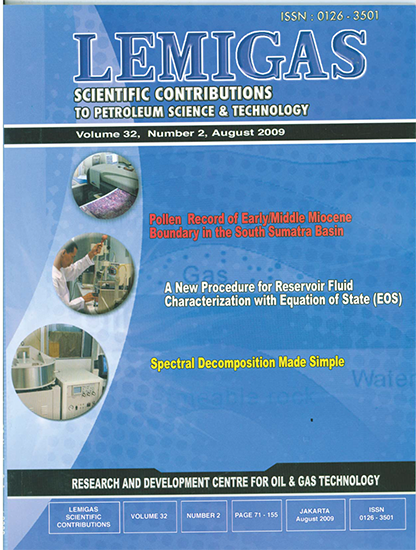The New Approach For Zonal Subdivision Of Pliocene - Pleistocene Nannoplankton Biostratigraphy In Waipoga-Waropen Basin, Papua
DOI:
https://doi.org/10.29017/SCOG.32.2.844Keywords:
Nannoplankton, Biostratigraphy, Pliocene, Pleistocene, Waipoga-Waropen BasinAbstract
Waipoga-Waropen Basin is placed in northern part of Papua on the island of New Guinea. The gas discoveries had been made since 1958 in this basin, however, no economic value of reserves lead to the not producing basin state until this time. The main problem in Waipoga-Waropen Basin is great thickness of Pleistocene sedimentary layers (until 7500m) as product of turbidite system (Wold & Barret, 2000). This makes difficulty in well section correlation based on the conventional biostratigraphy since individual layers within that section is being small part of biozone. Many reworked nannoplankton as implication of turbidite deposit are also being complicated aspect in biostratigraphic analysis. The Pleistocene ranges from 1.806 m.a. to 11.550 k.a. It was the most recent episode of global cooling or ice age took place. In nannoplankton biostratigraphy, this age is characterized by the extinction of Discoaster brouweri (Discoaster group) at the bottom and the first occurrence of Emiliania huxleyi at the top. The quatitative nannoplankton investigation of “T†well has been done, and there is evident that its sedimentary section gives the excellent nannoplankton assemblages to subdivide Pleistocene age sediments of Waipoga-Waropen Basin (Zone NN19) into 9 subzones. Biomarkers from the bottom to the top consist of: LO of Discoaster brouweri, FO of Gephyrocapsa caribbeanica, FO of Gephyrocapsa oceanica, LO of Cacidiscus macintyre , LO of Helicosphaera sellii, FO of Reticulofenestra asanoi, FO of Gephyrocapsa parallela, LO of Reticulofenestra asanoi, FO of Helicosphaera inversa and LO of Pseudoemiliania lacunosa. The sediments belong to zone NN 20 that placed in the uppermost part of Pleistocene were not analysed.
References
Bown, P.R., 1999. Calcareous Nannoplankton
Biostratigraphy. Kluwer Academic Publishers.
Gibbard, P. and van Kolfschoten, T. (2004). “The
Pleistocene and Holocene Epochs†In Gradstein,
F. M., Ogg, James G., and Smith, A. Gilbert (eds.),
A Geologic Time Scale 2004 Cambridge University
Press, Cambridge, ISBN 0521781426.
Martini, E., 1971. Standard Tertiary and Quaternary
Calcareous Nannoplankton Zonetion dalam
Farinacci, A. (Ed). Proc. 2nd Plank. Conf. Roma,
pp. 739-784. Edizioni Tecnoschienza, Roma.
Perch-Nielsen, K., 1985. Cenozoic Calcareous
Nannofossils, in Bolli, H.M., Saunders, J. B. &
Perch-Nielsen, K. eds., Plankton Stratigraphy.
Cambridge University Press. Cambridge.
Widdowson, G. 2001. E. Indonesian Gas-2 - Potential
giant gas reserves await development in
Irian Jaya. Oil & Gas Journal June 25, 2001, volume
, issue 26.
Wold, J. & Barrett, R. 2000. Irian Jaya stranded
gas accumulation revived after 42 years. Offshore
April 01, 2000 volume 60, issue 4.


